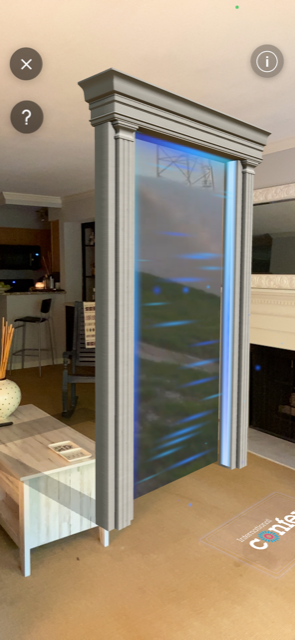Immersive technologies like VR and AR are not new, but their use has increased since the beginning of the pandemic that made meeting and connecting in person almost impossible. AR, while not yet ubiquitous, presents a valuable tool for virtual and hybrid events that allows organizers to create immersive and innovative digital experiences, and will only become more pervasive in the near future.
According to Vivian Chan, Head of Digital Sales at Nextech AR Solutions Corp, AR mainly takes three different forms — all of which require only a mobile device. The first is human holograms, which Chan notes are “amazing for virtual keynotes. Instead of having a keynote on video, you could have the keynote as a hologram that you view over your phone. It just gives the event a wow factor.”
AR holograms make for very shareable social media moments, and they can be a great option for sponsored activations as well. “Augmented reality gives you a sense of wonder and play, which we need to get back to. Things have been so pragmatic and practical,” says Chan. “AR is about imagination, playing, and entertainment. It gives attendees a moment of wonder that’s collectively shared.”
Another use for AR is portals, which allow users to virtually pass through a door and travel to another environment using their smartphones. Portals can be used for site visits of a facility, an office, a city, etc.

The third main functionality of AR for events is to showcase products, which can be particularly valuable for trade shows, which haven’t fared as well as other events in the virtual world. Products can be made into 3D models, which can then be accessed as AR elements by attendees from the comfort of their homes. “It gives it extra texture to how you tell the story, and how you build the experience,” says Chan.
This also has applications for in-person events: “How do you put a 50-ton rig into a conference facility? You were never able to do that. But you can now digitize that and make an augmented reality version,” explains Chan.
Chan shares that AR has grown considerably throughout the pandemic, and that many organizations’ timelines in adopting this tech has moved up as a result. “We're trying to stretch how we experience knowledge, information and entertainment together,” she says.
“There's so many unknowns with what's going on in the world right now that brands need to have an in person and digital strategy to stay competitive, be relevant, and be able to continue to grow. I believe that no industry is left untouched. We all have to think about new ways of how the consumer wants to engage. Behaviors have completely changed.”
Chan likens the gradual adoption of AR to when the world went from black and white television to technicolor, or when mobile phones became smart. “I think the world over the next five years or so is going to become 3D immersive. It's starting to happen slowly, bit by bit.” The next step, she says, will be AR-enabled eyewear, but for now, “anyone with a mobile phone can play and dream.”
One of the benefits of AR is that it’s simple to implement — the only hardware needed by attendees is their smartphone, which virtually everyone already has. Chan advises event organizers to just start playing with the technology to get a feel for what can be done with it.
“A lot of people often think that augmented reality is really complicated, but it’s very accessible technology and super easy to use,” she says. “I really think of it as a storytelling tool. At the end of the day, this technology is a tool to be able to cultivate an experience, tell a story, and drive a call to action. So what's the story that you want to tell?”